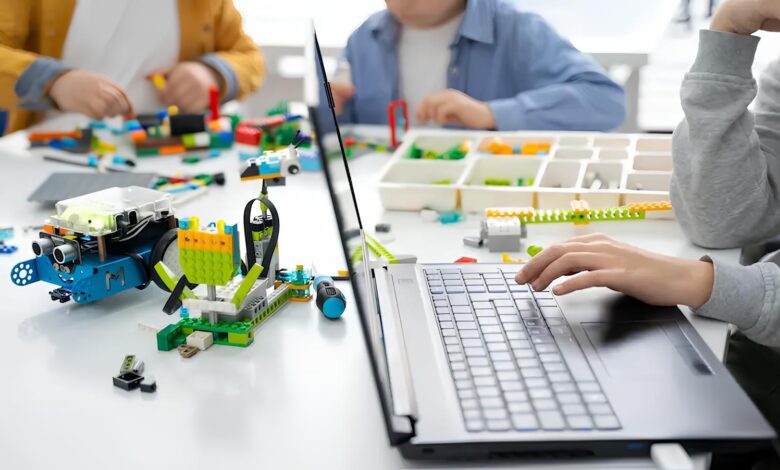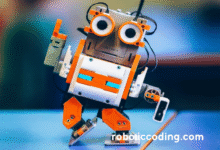Robotics Coding Starter Kit

In a world driven by technology, parents often ask themselves: How can I prepare my child for the future? The answer might be simpler than you think. A Robotics Coding Starter Kit is more than a toy; it’s a gateway to creativity, problem-solving, and innovation. Unlike traditional games that provide short-term entertainment, this kit teaches children real-world skills while sparking curiosity about how machines work. Imagine your child building their first robot, coding its movements, and proudly watching it come to life—that’s not just playtime, that’s future readiness.
This article explores why a Robotics Coding Starter Kit is a must-have for kids today, what’s inside the kit, its educational benefits, and how parents can use it as a powerful tool to inspire lifelong learning.
The Link Between Coding and Robotics
Coding is often described as the “language of the future.” But on its own, it can feel abstract to children. Robotics changes that. When kids write a few lines of code and immediately see a robot respond—by moving forward, lighting up, or picking up an object—the learning becomes tangible.
The Robotics Coding Starter Kit bridges this gap by combining software and hardware. Kids don’t just write instructions; they see those instructions take shape in the real world. This instant feedback loop builds confidence and keeps them engaged.
Moreover, robotics naturally integrates several STEM fields—science, technology, engineering, and mathematics. Children learn logical sequencing, cause-and-effect relationships, and even physics principles like motion and balance while having fun. Instead of passively consuming technology, they become creators who shape it.
What’s Inside the Robotics Coding Starter Kit?
Parents often wonder: What exactly does my child get in a Robotics Coding Starter Kit? While the contents vary by brand, most kits include:
- Robotic components: motors, sensors, wheels, gears, and building blocks
- Microcontroller or coding board: the brain of the robot
- Cables and power sources: to connect and run the system
- Software or app: a coding environment, often drag-and-drop for beginners
- Instruction manual or project guide: step-by-step projects to get started
Some advanced kits even come with Bluetooth or Wi-Fi connectivity, allowing kids to control their robots through a smartphone or tablet.
The beauty of these kits lies in scalability. A child can start with simple projects, like programming a robot car to move forward, and gradually move to more complex tasks, such as obstacle detection or voice commands. This progression ensures that the learning curve is manageable yet stimulating.
Key Benefits for Children (STEM, Creativity, Problem-Solving)
So why should parents consider investing in a Robotics Coding Starter Kit? The benefits go far beyond play:
- STEM Learning Made Fun
Instead of memorizing formulas, kids apply science and math in real projects. For example, they learn geometry while programming their robot to turn at a specific angle. - Boosting Creativity
A Robotics Coding Starter Kit doesn’t come with only one solution. Children can design unique robots, customize movements, and experiment with new ideas. Creativity thrives when kids see endless possibilities. - Problem-Solving Skills
Robots don’t always work perfectly the first time. Kids learn to debug, test, and improve their code. This trial-and-error process strengthens resilience and critical thinking. - Collaboration and Teamwork
Many children enjoy working on projects with siblings or classmates. Building and programming robots as a group teaches communication and teamwork. - Confidence Building
Every completed project gives kids a sense of achievement. Over time, they begin to see themselves not just as students, but as innovators.
In short, this kit is not just about robotics—it’s about shaping a mindset that embraces challenges and finds solutions.
Parent’s Guide: How to Choose the Right Kit
With so many kits on the market, parents often feel overwhelmed. Here are some tips for choosing the right Robotics Coding Starter Kit:
- Age Appropriateness: Kits are usually labeled with recommended age groups. Choose one that matches your child’s developmental stage.
- Coding Difficulty: For beginners, a drag-and-drop coding interface (like Scratch) is ideal. Older kids may benefit from text-based coding languages such as Python or C++.
- Durability and Quality: Since kids will handle the parts frequently, ensure the kit uses sturdy materials.
- Expandability: The best kits grow with your child. Look for systems that allow upgrades with additional parts and advanced projects.
- Support and Resources: Online tutorials, communities, and customer support make a big difference in the learning journey.
Parents should also remember that the goal isn’t to make their child a robotics expert overnight. The kit should inspire curiosity and provide an enjoyable way to learn.
Role in Education (Schools, Courses, Homeschooling)
The Robotics Coding Starter Kit is not limited to home use. Many schools now integrate robotics into their curriculum. Teachers find it an effective way to explain STEM concepts in a hands-on manner. Robotics competitions, such as FIRST LEGO League, further encourage children to innovate and solve real-world problems.
For homeschooling families, these kits are a treasure. They turn abstract concepts into engaging activities, keeping children motivated to learn. Parents can guide lessons at their own pace while encouraging exploration.
In after-school programs and coding boot camps, Robotics Coding Starter Kits provide structured yet fun learning environments. Kids collaborate on projects, present their ideas, and sometimes even compete in small challenges. These experiences mirror real-world teamwork and problem-solving scenarios, preparing children for future academic and career opportunities.
Conclusion: Shaping the Engineers of Tomorrow
The Robotics Coding Starter Kit is more than a gadget—it’s an educational revolution. It nurtures curiosity, strengthens problem-solving skills, and sparks creativity in ways traditional learning cannot. As children build, code, and test their robots, they are not just preparing for future jobs—they are developing the mindset of innovators.
For parents, investing in this kit means investing in a brighter, tech-savvy future for their children. And for kids, it’s an exciting adventure that transforms learning into play. In the end, this simple kit could be the spark that inspires the engineers, scientists, and creators of tomorrow.
(FAQs)
1. What age is best to start with a Robotics Coding Starter Kit?
Most kits are designed for children aged 7 and above, but some beginner-friendly kits are suitable for kids as young as 5.
2. Do kids need prior coding knowledge?
Not at all! Most starter kits use visual block-based coding, making them perfect for beginners.
3. How long does it take to build a robot with the kit?
Simple projects can be completed in under an hour, while advanced ones may take several days of experimentation.
4. Can the kit be used for school projects?
Yes, many schools encourage students to use robotics kits for STEM assignments and competitions.
5. Is it possible to upgrade the Robotics Coding Starter Kit?
Absolutely. Many kits allow add-ons such as extra sensors, motors, or advanced coding options to grow with the child’s skills.





